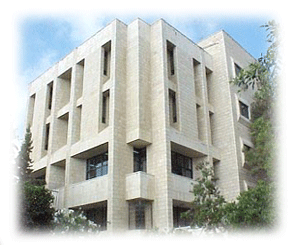Welcome to e-turathuna
|
Know your Palestinian Heritage
|
Turathuna Center
Jewellery of Palestine

The collection donated by Mrs. Elizabeth Moley at Turathuna Center
|
|
The acquisition and wearing of jewellery formed and continues to be part of the social structure of Palestine. A young woman acquired most of her jewellery upon marriage and it became an integral part of her new status. Gold and silver coins were often used as a decorative element in jewellery, the monetary value of which was at times utilised when the need arose.
|

Girl from Bethlehem wearing
her traditional dress and jewels
|

Bedouin woman wearing
bead necklaces, gold nose ring,
and hair slide with gold coins
|

Ramallah woman wearing
her traditional dress and jewels
|
Not surprising, the amount of jewellery a bride received depended on the financial resources of the bridegroom. The dowry or bride-wealth would be negotiated between the two families and when it had been agreed to, the bride’s father would purchase the jewellery. In Palestinian society once the woman received the jewellery it became her property and she had the right to dispose of it in any way she thought fit. Nevertheless, traditionally, the jewellery often constituted the family’s material and financial assets. A woman enjoyed wearing the jewellery since it spoke of her social and economic status, and the affection of her family and her in-laws. As it represented part of the wealth of the family, it was also a demonstration of the husband’s trust as well as an expression of his generosity and success in life. By wearing the jewellery a woman was making a public statement not only about her husband but also about herself, for it shows that she must be highly regarded and appreciated to receive so much. Lack of money in nomadic or village society was nothing to be ashamed of but every husband gave his wife the best he could afford in order to show his appreciation for her as his complementary other half.



From the collection donated by Mrs. Elizabeth Moley
In difficult times some of the coins were sold to help keep the family going. If the woman earned money, as did some of the village women from the sale of eggs or agricultural produce, on special occasions such as the birth of a child she would add to the amount of jewellery she owns by purchasing additional jewellery with her own resources . It was said that during World War I, many Turkish coins were in circulation, due to the fact that many women converted their jewellery to cash in order to support the family while the men were away fighting. Nevertheless, some of the head-dresses on which many of these coins were displayed became heirlooms and were passed from mother to daughter.
A variety of silver bracelets, necklaces, chokers, hair ornaments and rings were worn by villagers and Bedouin women and made by silversmiths who lived in all the main towns. Like garments, Palestinian jewellery was subject to continual foreign influence. Silversmiths can easily travel with their craft, and many migrated to Palestine from other parts of Arabia during periods of Levantine prosperity or hardship in their own countries.
|

From the collection donated
by
Mrs. Elizabeth Moley
|
Early in the twentieth century, in addition to silversmiths of local origin, there were silversmiths from Syria, the Hejaz, Armenia, the Caucasus and Yemen who were working in Palestine and Transjordan. There was also local migration across the Jordan river. For example, Yacoub Zakariyah (who signed his bracelets ‘Hanna’ after his father) moved during the First World War from Nablus to Al-Salt in Jordan where he learned new techniques. In 1930 he moved to Jerusalem for three years and then to Bethlehem where he stayed until 1967, when he moved to Amman. Silversmiths were often members of religious minorities, either Christians or Jews, with specialist skills and knowledge tending to be safeguarded in families and “passed down” from one generation to the next.
|

From the collection
donated
by Mrs. Elizabeth Moley
|
Some silversmiths specialized in specific articles and styles, that were worn by women in the catchment area of their particular town, leading to some regional differences in jewellery. Bedouin women in the eastern hills and Jordan valley tended to wear silver made in Nablus, Jerusalem, and Bethlehem, while that worn by the Bedouin women of the southern Negev desert was made and purchased in Gaza and Beersheba. Townspeople, villagers, and Bedouins living in the same areas bought their jewellery from the same shops and wore similar styles, the main difference being in the value of the pieces.
|

Necklace worn
by Bedouin women |
The well-to-do bought jewellery of the highest grade of silver (made from melted-down “Maria Theresa dollars” mixed with 15% copper), while cheaper items made from coins of lower grade silver and brass were bought by the less affluent customers, especially the Bedouins. Among Bedouin women, the wearing of stones, beads, and other articles such as tortoise shells and alum was thought to prevent specific illnesses or promote well-being. For example, a smooth white bead is still believed to promote lactation, and a dark green bead was believed to prevent post-natal diseases. Blue beads, and glass beads with “eyes,” were considered to counter the “evil eye” - such as the jealous glance of certain malevolent persons which was believed to cause disaster, illness or death. Children were especially vulnerable to the evil eye, and so were kept scruffy and unwashed to avoid attracting dangerous and unwanted attention. Their caps were often covered with amulets
and beads, and charms were attached to their clothing. Women’s tattoos were also thought to ward off the evil eye.
|
|
Bracelets of blue and brown glass, made in Hebron, were widely worn and necklaces made from coral, imitation pearls, and cloves were popular among Bedouins and villagers, cloves being especially associated with weddings.



Clove necklaces
From the late 1920s and 1930s, as people became more economically better off, jewellery made of gold gradually replaced silver. At first gold coins were strung on cords as necklaces; later bracelets and rings appeared in the shops. New types of jewellery also appeared, still fashionable today, such as earings, hair-slides, and brooches for fastening the necks of dresses. Overtime jewellery of foreign origin replaced local products, and Palestinian villagers were drawn into the modern, international, and competitive market. |
|
|
|
Sources: |
Palestinian Costume, Jehan S. Rajab, London, Kegan Paul International, c.1989 |
| |
Palestinian Costume, Shelagh Weir, London, British Museum Publications, Ltd. c. 1989 |
| |
Mrs. Elizabeth Moley's donated collection at
Turathuna Center, Bethlehem University Library |
|
| |
|
|








